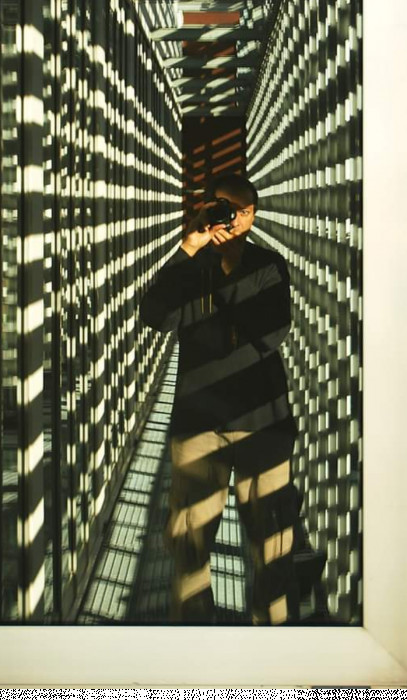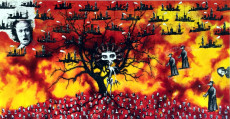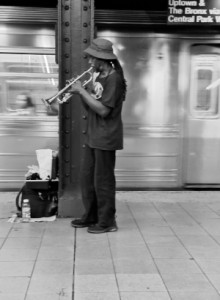
Discover the contemporary work of François RIVIÈRE

« The torn poster » is a photographic exhibition by François Rivière, founding member of the photographic agency « SOLARIS AGENCY » in 2013, which presents 28 color exhibition prints (HR) in the format 60 2013, and were made mainly in France (Toulouse, Paris, Bayonne), but also in Italy (Milan), in Ex-Yugoslavia (1995- Split in Croatia) and in Germany (Berlin). Some of these images are accompanied by « off-screen » having the function of restoring the urban settings in which they were born.
Authenticity The quality of each of the original photographs is guaranteed by the triple ARTtrust certification, and they are numbered « #1 out of 25 » à “ #25 out of 25”. The unit price of these images is 500 Euros including tax. This project, text and image, was pre-selected. in 1999 for the entrance exam to the Academy of Rome (Villa Médicis, Delegation for Plastic Arts of the Ministry of Culture and Communication), photography section. The first exhibition took place in Paris. the Toulouse bookstore « White Shadows » from March 6 to April 7, 2000 as part of the « Image Forum » From toulouse. An exhibition of the total project « The torn poster » (photographs, text, music and slide projection) was held at the Basque and History Museum of Bayonne from May 2 to 31, 2011. Photography « Hemen » bearing the No. 1 out of 25 was acquired by the museum management, while that bearing the No. 2 out of 25 was acquired by the museum management. offered to the private sponsor who had financed this event.
François Rivière
25 rue Victor Hugo
64100 Bayonne
[hidden; for your safety]
[hidden; for your safety]
« The torn poster »
« In 1969, all newspapers published the photograph taken from
the space pod on a trip to the Moon; it was the first
photography of the world. (…)
It was not only the image of the world but the image that
contained all the images in the world: graffiti, frescoes,
paintings, prints, works, photographs, books, films (1) ».
My images tell a story, that of all images
that they contain, from the most intimate to the most intimate. the most commercial,
Much more than they show us this or that other reality
of the world. However, the need to to find one's way in the
overabundance of representations and messages, is
precisely the foundation of photography as I see it
practical. This is why I decided to move towards the
search and capture of a « synthetic image », used to
invent, to to feel, to to tell, and whose reading would be for everyone
each one, personal, unique, and precious.
By photographing posters, I am, in short, only
reproduce one image with another. However, by choosing
to photograph those which are lacerated, partially destroyed
or made illegible by their concentration in a small space,
I redefine its contents, I modify its meaning and I propose a
another reading of these compositions, taken as urban traces.
By going to the encounter with these compilations of posters which
color everywhere they arise, I restore in some way
sort the event pigmentation of the city. From this
application to explore the cities foot, at survey them, in
take all the measure, sometimes going so far as to get lost there in order to
to understand all the messages, was born one more contact
intimate with a reality hidden.
These torn posters speak to us because they use a
code which corresponds, although’à barely shifted, at the same time one of our codes
intimate. They touch us, because they represent a
accumulation of visual universes which pave the way for our desires.
They channel our dreams by offering us a representation
frozen. All our emotions can find an echo here in
the insinuating penetration of the messages they convey. And this
clandestine impregnation works even better than these
messages are in agreement with the deep structure and
unconscious of our modern imagination. We are then
no more masters of our judgment than of our emotions.
Out of their contexts, proposed with another setting
scene and a new model, these posters switch to a
new function which will become more pictorial and poetic.
Originally advertising, cultural or political, these large
posters are directly linked to current events, and carry within them
the ephemeral of the event they announce. They represent
a link in our contemporary history and remain in
definitively the RAM of a specific period. But their
random mixing, without representing a fair synthesis of the activity
human, can however claim to constitute an attempt
writing containing a new vision of the world. The choice of
framing at the time of shooting sets the limits of the discourse
and intrinsic symbols to the image.
It participates in general homogenization as well as
oppositions and internal imbalances particular to each shot.
It’s in this conflictual relationship the tensions contained in
the image that a semantic construction finds its place. From this
uncertain quest arises from my real-time research of
“ the relevant accident ». It is up to me to flush him out there. where it will be the most successful. These
torn posters give away see and see hide, understand and
imagine. But the interpretation of what the image contains will remain
singular to each of us.
These torn poster panels contain an unfinished painting,
an unforeseen work, fleeting and in the making. Each deterioration
or new layer that can modify it, it is then a matter of identifying
a subject having a body that comes together in dismemberment
and disorder. It is by relying on the inventiveness of the chance,
that the tearing creates a certain unity in a conglomerate
posters. Keep a lasting record of their existence
fleeting returns to; fight against the inevitable time factor
destroyer of his own creations. By calling the devices
photographs of « clocks see (2) », Roland Barthes
determined their essential mission: to stop the action of time.
It’s about giving permanence to the present time in order to
preserve in an unalterable way what until then was part of the
fugitive, transitory. This faculty momentarily to suspend the
time participates in nourish in us this feeling of nostalgia for
what was and will no longer be.
As an informed art critic, Charles Baudelaire wrote about what he
called the painting of modern morals: « The pleasure that we
What we can remove from the representation of the present is not only due to the the
beauty with which it can be coated, but also with its quality essential
from now (3) ». 0r these torn posters are a metaphor for
time passing by. By overlapping, stratification, they are
comparable to the geological layers of the earth.
They become the very structure of readability. time.
My photographs offer a translation and agrave; through them,
it is a speech that the walls operate.
It is to account for this journey in the depth of the
things that the material of the poster takes on such primordial relief
in each of my images. Without these superpositions, these
accumulations of papers, of various textures and tones,
there cannot be a hidden reading, a meaning to what is happening. discover
behind these panels of damaged posters. A poster can
meeting another by chance when this one is located
deliberately out of frame, on the fringes of the locations which
are vested, when it returns to the wild state, outside the circuit
authorized. Once united, they can then mix,
overlap, partially overlap. Then only their
new narrative function will become perceptible, convincing and
shareable. Besides, it’s by listening to the murmur of these walls
crossed out, observing these crumpled draft panels,
amalgamated, that it seems to me to read unfinished scenarios,
secret meetings, to build flâneur reveries there,
to detect unusual associations of ideas.
In a more raw aspect but nevertheless with a fairly
rendering
close to photomontages or certain collages, pieces
images are thus welded to the others. Creating
anachronisms, distorting reality, they flirt with
caricature by bringing together scales, intentions,
of different values. It’s then up to date. an exquisite corpse game
(prized by the surrealists and the situationists), that these posters
torn pieces invite us. By insinuating itself into our imagination,
they invent a narrative framework that echoes what has happened. their
random encounters. In this kaleidoscope of information
private thematic classification, bridges are built
allowing us to imagine a fable or a story. Each of these
photographs is a proposed canvas for the scenario
of a story that remains to be told invent. When it comes to a piece
isolated poster, the redundancy of the text on the image and the heaviness
written mercantile arguments have disappeared or remain illegible.
This feeling of emptiness (in a space usually closed and
saturated), is reinforced precisely by this absence of framework for
displays it. The wall on which it is stuck decides its news
dimensions. It becomes a pure figure of speech, a kind
Western ideogram.
In this urban frenzy of activity, human,
a composition of torn posters could be assimilated
à poetry in prose.
Identically, she uses everyday words but it is in
their arrangement and phrasing as the poetic image
reveals itself in all the expression of its beauty.
On the other hand, poetry in verse would represent the collector's poster
put under glass and everything inside. foreign to the hazards of the palisades
of construction sites. In the middle of this debauchery of means
advertising, of an overproduction whose wild display does not
represents only the surplus, I track down those which, once reunited
reveal a true unity of nature. formal. It’s a treasure hunt
dotted with signs and omens whose correct interpretation
can allow me to reach the secret places of their residences.
François Rivière – Bayonne 2019 –
(1): LUIGI GHIRRI – KODACHROME –
EDITION CONTRA-JOUR 1978.
(2): ROLAND BARTHES - THE CLEAR ROOM –
EDITION GALLIMARD 1980.
(3): CHARLES BAUDELAIRE - THE PAINTER OF MODERN LIFE -
The artistic work of François RIVIÈRE
Newly added works
Torn poster




























































































